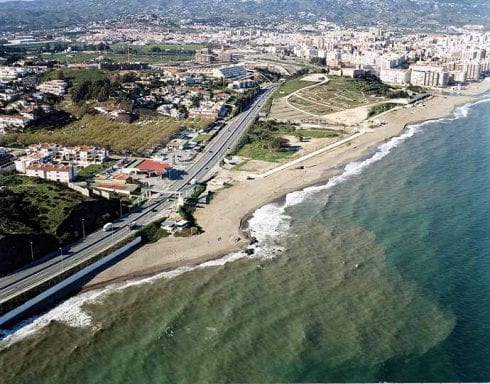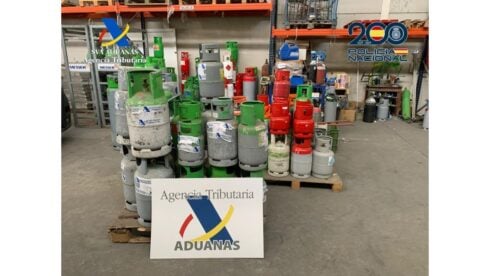FUENGIROLA could be hit with a devastating Valencia-like disaster due to continued overdevelopment in flood zones, it has been warned.
The Costa del Sol town of 85,000 and parts of Mijas have been singled out after catastrophic flooding hit inland regions of Malaga and Spain’s eastern region last week, killing hundreds.
Neighbourhoods such as Las Lagunas and Camino Viejo de Coín would be vulnerable to the kind of flooding that drowned people in their cars should the Fuengirola river overflow, according to a report by Mijas Ecologists in Action.
The area around the river, which runs through the east of the town, has been heavily built upon since the 1980s – often in direct violation of urban planning regulations and risk studies.

And there are countless new projects in the works for the vulnerable region, which have been branded a ‘very serious mistake.’
These include a nursing home, a 50,000 sqm hospital and a huge showpiece park called el Gran Parque de la Costa del Sol.
“The catastrophe in the Valencian Community, where more than 500mm of rain fell in some parts of Alicante, should give pause for reflection for the Andalucian town halls and the interested parties that insist on building in vulnerable territory,” the environmental group said in a statement.

“Despite the multiple declarations of a climate emergency, administrators continue to act as if there were no real emergency and it can be business as usual.”
“It means continuing to expose more and more people to the same possible fate as we have seen in Valencia, and more jobs and economic activities to a catastrophic event given the enormous vulnerability of the Fuengirola River.”
Residential housing has popped up in the region since the 1990s, both legal and illegal.
Neighbourhoods such as those located on Avenida Andalucía, Camino Viejo de Coín, Calle Alfarnate, Algatocín are especially vulnerable, as are homes built illegally, including La Alberquilla.
And the construction does not cease, according to the ecologists.
“Currently, there are signs of land sales, earthworks, foundations are being dug, completion of developments, etc.”
The region has been hit by disastrous floodings before, with up to 14 people killed in Fuengirola in 1988.

A mother and three children only managed to miraculously survive the disaster by clinging to a tree.
Another flood struck the region just a year later in 1989, and was followed by further flooding in 2007, 2015, in 2016 and 2020.
While extreme weather events are less frequent in Malaga than Valencia, they may begin to even out as the Alboran Sea warms up.
“There is no doubt that [extreme floods] are going to happen,” Enrique Salvo, professor and director of the climate change group at the University of Malaga, told SUR.
“The sea is getting warmer, and we also have a mountain range next to the coast and this means that, as in the case of Valencia, a stationary DANA can discharge in this way.
“And with a strong process of urbanisation, with housing in flood zones and without adequate planning for the 21st century, we have already seen that climate change is a reality, as is evident again these days.
“The saddest thing is that these new urban developments are designed for the most deprived families and they are the most affected”.
The Fuengirola report comes after researchers revealed that a third of homes flooded during the storm in Valencia were built on land at risk of flooding during the housing bubble in the early 2000s.
Overall, an area of some 15,633 hectares was flooded, affecting over 190,000 people in 17,497 residential buildings.
Almost a third of the residences affected were built in flood risk areas during the housing bubble, according to research carried out by DATADISTA.
The study claims that developers would have known the land was liable to flooding thanks to the 2003 Land Action Plan to Prevent Flooding in the Valencian Community (Patricova).
Click here to read more Malaga News from The Olive Press.








